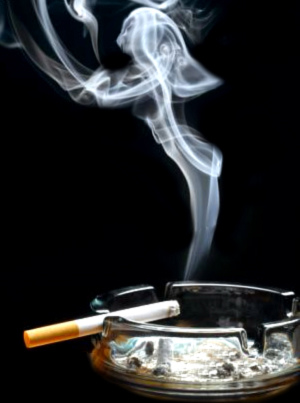For part 1, click here.
This is part twoof a two part series discussing laws that regulate the tobacco industry and pigovian taxes: excise taxes placed on a market to correct a market outcome, often because of a negative externality such as health risk or pollution.
One of the most important policy questions for the next generation of politicians and citizens alike is how to address tobacco use. It is a fair assumption that most non-smokers feel that smoking is not a good personal decision for many people. Another standard belief is that children should not be exposed to cigarette use at a young age. The method in dissuading this, however, is where the debate gets particularly important.
Is banning cigarettes altogether the best method to go about it? Thousands of American jobs will be lost. Cigarette smokers everywhere will be without their main ability to consume nicotine. Many may substitute their addiction into other stimulants. Also, one of the major American ideals of personal choice is breached with this method.
Is the prevention of advertising to children the appropriate method? This approach seems particularly peculiar considering that sales to minors are already illegal. This means that the bill itself is admitting its shortcoming in law enforcement of the ban of underage smoking. Placing the onus of the desire of children to smoke on cigarette companies themselves seems a bit foolhardy. I find this particularly hard to believe considering that cigarette advertising on television or radios is already illegal. The last potential policy solution is to increase taxes on cigarette sales.

- Does Policy Affect This? From Panos.
Taxes on cigarette sales is one of the most popular policy decisions to every non-smoker. Most non-smokers feel that even if smoking should not be banned (some feel it should), it might as well be taxed to raise money for the government and possibly dissuade smoking. I feel that the cigarette tax is not as rosy as it initially seems. Firstly, the most important thing to look at is the demographics of smokers (source). Between races and genders, there is not a major difference in cigarette smoking prevalence. Class differences, however, are a much larger concern. Compared to the 21% national smoking average, 33% of those living under poverty currently smoke. Education also plays a major role. Those educated between nine and eleven years (no high school degree) have a 35% smoking prevalence while those educated sixteen or more years (college degree or above), have only a 12% smoking ratio. What this suggests is that on average a smoker is slightly less educated and slightly less wealthy than the average non-smoker.
A debate that seems that it will never be able to go away is about tax policy over regressive, proportional and progressive tax structures. The cigarette (and other pigovian taxes, such as on alcohol and gasoline) tax is a regressive tax, equally applicable to all segments of the income distribution. In other words, the non smokers are essentially having the underclass pay off their own mistakes (in our words, their cigarette smoking) with taxes. Thus, most of the people who are hit by any increase in taxes are those who are both addicted (and unlikely to change as I am about to address) and need the money most of all to support families and their personal bills. This view of the tax seems like it is another form of punishing undereducated citizens, similar to the lottery.
The next, more important issue with the cigarette tax is: Does it accomplish its dissuasive purpose? Will raising taxes actually cause a decrease in cigarette usage? A very important part of economic analysis in real markets is the elasticity of the supply and demand curves. Most addictive or necessary life goods tend to have an inelastic demand, such as medicine, food, and cigarettes (source #1, source #2). What this means is that an X% increase in price should lead to a <X% decrease in consumption.
Before I wrap up, I would also like to point out that the majority of the cigarette taxes in the USA are state based, with the more traditionally tobacco-heavy states having the lightest taxes and the BosWash corridor having the highest. There is some evidence (here) that the differences in state taxes with the proliferation of the internet age leads smokers to substitute out of smoking in heavier-taxed states into slightly-lesser taxed states.
Cheers,
Cameron Daniels

